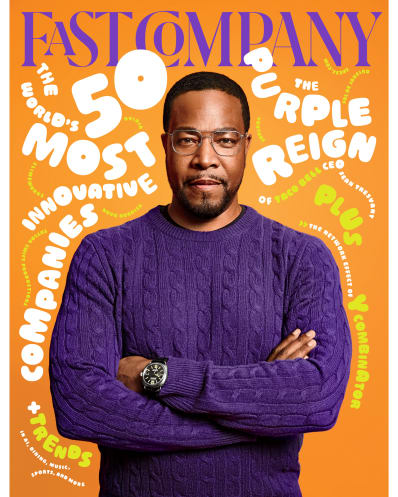On the border of Georgia and South Carolina, the Central Savannah River area is home to 14 counties with large Black populations. It s also home to a lot of nukes. In these communities sits the crown jewel of the world s nuclear arsenal, says Reverend Brendolyn Jenkins Boseman, senior pastor at the Hudson Memorial Christian Methodist Episcopal Church in Augusta, referring to the Savannah River Site, a 310-square-mile U.S. Department of Energy nuclear weapons plant built in the 1950s. The area also houses Plant Vogtle, the first new nuclear power plant built in the U.S. in more than three decades.
advertisementadvertisementBoseman says it s common for such potentially hazardous projects to be built in low-wealth and politically impotent communities. It s an example of environmental racism, where redlining in the early and mid-20th century often forced minority communities into areas that housed industrial waste sites, causing health disparities ranging from air pollution to unsafe water. Because many of these areas are also close to climate disaster zones, the populations bear the brunt of things like flooding and extreme heat.
The Black church, long a source of social support and guidance for the community, is attempting to use that traditional role to raise awareness about climate change and environmental justice. A group of five female clergy leaders from different Christian faith groups started The Black Church-The Green Movement, a program for training pastors and church leaders across the country to, in turn, educate their own congregations on how climate issues are inextricably linked to other problems like poverty and food insecurity and to spur action, from community-level interventions to voting for climate-friendly candidates.
Black people are the most harmed by climate change: 40% are more likely to live in areas with the highest projected extreme temperature rises, and 34% with the highest projected child asthma increases due to bad air quality. We face barriers and obstacles that are often not prevalent in other communities, says Gloria Ricks, president and CEO of Mount Zion Community Outreach in Augusta, one of the five leaders. And yet environmental justice organizations receive only about 1% of all environmental grant dollars from philanthropic sectors.
advertisementadvertisementWhile new polling shows that climate change is a growing concern among Black voters 74% say they re worried, and 7% say it s their top issue church leaders say they see a gap in awareness. When we say climate change and environmental justice, a lot of our community thinks that we re going to ask them to go hug a tree, says Boseman, another of the five leaders. (The others are: Dallas Conyers, associate pastor at Macedonia Missionary Baptist Church in Spartanburg, South Carolina; Reverend Esther Wiggins of the First Faith Baptist Church in Cambria Heights, New York; and Bishop Marcia Dinkins, executive director of Black Women Rising in Dayton, Ohio.)
But environmental justice touches on a host of relevant issues such as mental health, childhood obesity, food deserts, racial injustice, gun violence, and poverty. What s been missing is the ability of faith leaders to connect those dots, Boseman says. For instance, Black people have been talking about living in concrete jungles for decades, she says, but that doesn t just define the urban environment; these communities are coping with hotter temperatures, lack of shade from trees, and a shortage of indoor air-conditioning, among other challenges. Those are precisely environmental issues, just with different terminology.
When The Black Church-The Green Movement started two years ago, the plan was to train 75 other pastors about climate change and environmental justice. But the effort was so successful that the five founders trained 350 fellow pastors. They did it with the help of $200,000 from progressive funders like the Pisces Foundation and the Hewlett Foundation via a national grant-making initiative called Mosaic.
advertisementNow into its third year of operation, Mosaic aims to give environmental organizations the tools and resources they need. There are more than 15,000 such organizations in the country, says Katie Robinson, Mosaic s project director, but not all movements necessarily win. The movements that do typically have an infrastructure, shared connection, shared tools. Part of Mosaic s mission is to build a more pluralistic movement by including those who have been left out in the past.
The environmental movement hasn t typically been inclusive, and the faith community in particular is just so vast, Robinson says. Mosaic has already issued about $11 million, and 85% of its first-year funding was to front-line efforts specifically led by BIPOC and women groups.
The first round of sessions held by Boseman, Ricks, and their fellow faith leaders were Saturday-afternoon primers on climate change and environmental justice. Now the clergy plans to iterate and adjust the curriculum to offer a deeper dive into six modules for 25 of the original 75 participants in cities ranging from Atlanta to Columbus, Ohio, to Toms River, New Jersey. The idea is that the leaders in training will then teach their own congregations as they see fit, using the PowerPoint presentations, sermon outlines, and Bible study suggestions provided during the sessions.
advertisementThe Black church in the U.S. evolved from hush harbors, where slaves would secretly gather after dark to worship. Throughout the decades, it has not only been a religious outlet but also a place to seek social justice guidance. Any issue that we had was most often brought to the church first for a solution, Ricks says. As a Black woman who grew up in Black churches, that s all we knew.
Some 77% of Black Americans surveyed by the Pew Research Center in 2019 and 2020 said the Black church has helped achieve more racial equity. Boseman of Hudson Memorial CME says the church was helping Black people grapple with disasters long before FEMA (the Federal Emergency Management Agency) was even an entity. When the trouble comes, it s always the church and the faith community that [are] the first responders, she says.
Wilma Moore, a ministry leader at the Macedonia Missionary Baptist Church in Spartanburg, South Carolina, says the church has always been instrumental in everything that s important to try and advance our people. Moore has long been concerned about climate change, but says she noticed that her fellow congregants weren t so troubled. I am concerned about our communities, who don t have a whole lot of say-so but who have to experience dramatic changes in weather, she says. Because of other priorities, I feel that a lot of people are just walking around with their heads in the sand.
advertisementShe attended a climate training with her church s associate pastor, Dallas Conyers, one of the movement founders, and is now working to get more community members engaged. For Moore, the mission is intrinsically linked to her faith. She believes that teaching others is what Jesus would do, and she sees climate disasters as tied to the biblical teachings she grew up with. You will be amazed at the similarities of what was written many years ago how it s unfolding right now on this Earth, she says.
The Black Church-The Green Movement founders hope the movement will not only raise awareness but also translate into concrete actions to mitigate the effects of climate change on the local level. We re not cookie cutting this for anyone, Boseman says. Communities could decide to start a green team ministry at their church, arrange emergency planning trainings, or partner with other community organizations to have a voice in how funds from the Inflation Reduction Act could be used most effectively to help their communities.
Boseman s church in Augusta installed a microfarm opposite the church at a housing development, with the assistance of the housing director. It s become a way for the community to get involved in growing and buying nutritional food and using their EBT (electronic benefit transfer) cards in what s otherwise a food desert. Boseman says it s become a microenterprise that keeps children occupied and away from the dangers of gang violence.
advertisementHistorically the Black church has also been involved in get-out-the-vote campaigns and in this midterm year, the movement is pushing for congregants to be green faith voters for climate-sense candidates. While Boseman doesn t tell her congregants which candidate to vote for, she asks them to consider, When it comes to climate change and environmental justice, who is talking about climate change, and who s denying it? That s an easy question.
advertisementadvertisementadvertisementadvertisementadvertisementAbout the authorVideoTech






 [Photos: Infrogmation of New Orleans/Flickr, Chris Rogers/Getty Images, Maria Wachala/iStock/Getty Images Plus]
[Photos: Infrogmation of New Orleans/Flickr, Chris Rogers/Getty Images, Maria Wachala/iStock/Getty Images Plus]